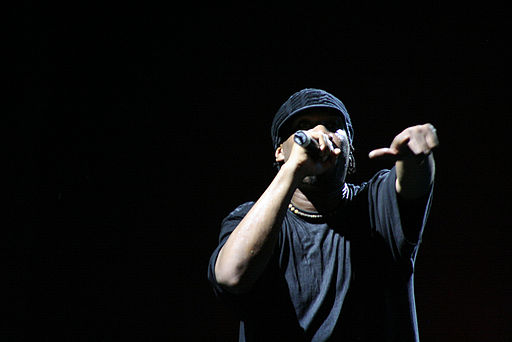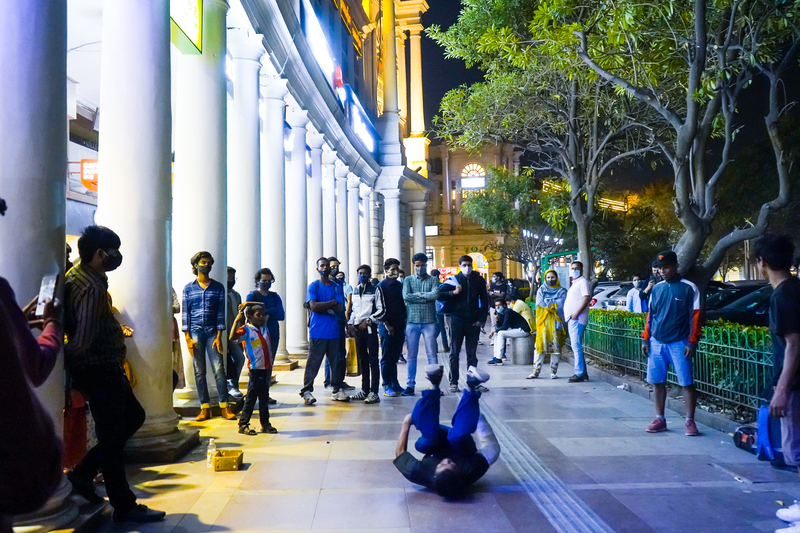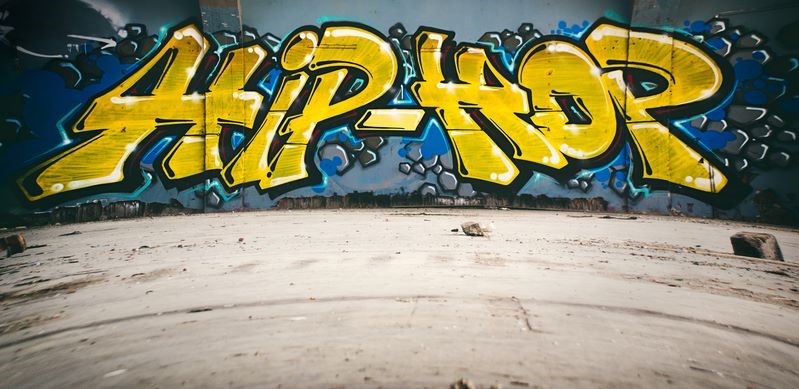Find out more about The Open University's Language courses and qualifications.
Hip Hop
Hip hop is a Black radical knowledge movement that
emerged in post-industrial urban North America in the 1970s and that has now
become a global phenomenon and source of cultural inspiration for marginalised
youth from around the world. The term ‘hip hop’ was coined in the late 1970s,
possibly in the South Bronx, New York City, to refer to a set of cultural,
artistic, spiritual and intellectual practices used for self-expression and the
circulation of knowledge. These practices include, among others, graffiti
writin, rappin, beatboxin, deejayin, samplin, street dancin, breakin, street
knowledge, informal education and entrepreneurship. These practices developed out
of earlier Black and Latinx traditions, for instance Mambo dancing, playing the
dozens and participation in the Nation of Islam/Nation of Gods and Earths (Five
Percenters). The emergence of hip hop in the South Bronx is inextricably linked
to the socioeconomic disenfranchisement and cultural abandonment that took
place in the post-industrial inner cities of North America (for historical
accounts of the developments of hip hop, see Toop, 1991; Rose, 1994; Chang, 2005; Chalfant, 2006). The Bronx represents a universal myth that can be used by global hip hop practitioners to imagine old school authenticity in their local contexts.
The two terms ‘hip’ and ‘hop’ are themselves important words for the practitioners’ understanding of the culture. One of the most famous ambassadors of hip hop, the self-proclaimed teacha of hip hop, KRS-One (2007), in his song Hip Hop Lives (featuring Marley Marl), provides the following concise definition of hip hop:
 KRS-One performing in 2007‘Hip means to know it’s a form of intelligence. To be hip is to be up-date and relevant. Hop is a form of movement. You can’t just observe a hop you got to hop up and do it.
KRS-One performing in 2007‘Hip means to know it’s a form of intelligence. To be hip is to be up-date and relevant. Hop is a form of movement. You can’t just observe a hop you got to hop up and do it.
Hip and hop is more than music. Hip is the knowledge hop is the movement. Hip and hop is intelligent movement. Or relevant movement we sellin the music.
So write this down on your blackbooks and journals.Hip hop culture is eternal. Run and tell all your friends.
An ancient civilisation has been born again. It’s a fact.’
Whereas the most widely circulating ‘definitions’ of hip hop derive from those organic intellectuals who were produced by US-American hip hop culture (like KRS-One), global hip hop practitioners, such as the ones I have met in Delhi, India, constantly negotiate the meanings of hip hop and transform these meanings so they become authentic expressions of life and culture in the local context.
Ethnography
Based on eight months of ethnographic fieldwork in 2013, my book Transcultural Voices: Narrating Hip Hop Culture in Complex Delhi, tells a story of hip hop cultural production in Delhi. I interacted with research participants, mostly male breakers, b-boys, in their late teens and early twenties. I conducted participant observation and recorded ethnographic interviews and informal interactions, but several other types of data have been collected as well, such as recordings of public performances at jams, photographs and audio-visual materials circulating online. I also participated in hip hop cultural practice like (legal) graffiti writin, emceein and producin beats. I attended events, socialised informally and extensively wrote field notes. All these materials inform the story I tell in this book about a culture in the making.
 Breakers busking, Connaught Place, a popular hangout in central Delhi
Breakers busking, Connaught Place, a popular hangout in central Delhi
Most of my research participants grew up during Delhi’s phenomenal rise in population and its spatial expansion in the last 25 years. Delhi is India’s capital and second largest and fastest growing urban agglomeration. The National Capital Territory, NCT, is an urban sprawl of approximately 600 square miles and home to over 20 million people (India, Census 2011), half of who migrated to the city or were born in the two decades after India’s economic liberalisation in 1991. Delhi conjures up metaphors typical of the urban: modernity, prosperity, worldliness and liberal lifestyles on the one hand and corruption, crime, violence, ignorance and racial conflict on the other (for studies on Delhi’s contemporary urbanity, see Sundaram, 2010; Ghertner, 2011; DuPont, 2011; McDuie-Ra, 2012; Dasgupta, 2014; Dattatreyan, 2020). In the last two decades Delhi has become a complex and superdiverse (Vertovec, 2007) metropolis. The city has seen multiple layers of migration, striking changes in social and physical mobility, foreign and domestic investment and increased racial, communal and political unrest, especially after the brutal gang rape and murder of Jyoti Singh on 16 December 2012, three weeks before my fieldwork began, which was followed by national and international outcry and unprecedented protests. The mediatisation and public imagination of this event fundamentally restructured gender, class and age relations in Delhi (Atluri, 2013; McLoughlin, 2019; Dattatreyan, 2020).
Delhi’s urban complexity is an important characteristic of the city’s hip hop scene in which I participated in 2013. On the most basic level, this complexity becomes relevant because all of my research participants are domestic or international migrants. They either themselves migrated to Delhi, like B-Boy Rawdr who was born in a small village in Uttar Pradesh, or they were born into migrant families, like Prabh Deep, whose grandparents fled the Partition of the Punjab. On a more granular level, my participants reflexively engage with Delhi’s complexity on various scales. For example, in and through Delhi’s complex urbanity, they find ways with which they can transform their marginalised positionalities as migrants and begin to imagine themselves as part of a globally unfolding urban hip hop culture, which challenges this urban complexity as much as it relies on it. Much of this book attempts to account for my participants’ strategic use of this complexity, rather than analytically reduce such complexity for the sake of my own analytical clarity and coherence – following Blommaert’s (2016) call.
The young b-boys, graffiti writers and emcees who you will meet on the pages of the book were mostly in their late teens and early twenties during my fieldwork in 2013. They came from diverse social backgrounds. Some of them lived in gated communities in comfortable houses and went to colleges and universities abroad, while others come from disrupted families and lived in small multi-generational houses in informal settlements or refugee colonies and worked manual, service and precarious part-time jobs to support their families and were thus limited in their mobility. A few were women and their opportunities were severely regulated by hip hop’s hyper-heterosexual regimes, which I discuss throughout my book and in particular in Chapter 7, in the prologue and in the epilogue. What all my participants shared with each other – and indeed what they shared with me – was love for hip hop culture. For all of us, hip hop is more than a fad. It is a way of life, a perspective for understanding the world and a set of moral and aesthetic values that shape our futures and connect us with each other across differences in class, caste, ethnicity and nationality – but not so much across gender and sexuality. Hip hop is a cosmopolitan culture, yes, yet it has to do a lot of catching up to become more inclusive of female, non-heterosexual and queer heads.
Together with the work of the anthropologist Ethiraj Gabriel Dattatreyan, with whom I conducted co-incidental collaborative fieldwork in Delhi, my book represents a first academic account of hip hop in India. Dattatreyan’s book The Globally Familiar: Digital Hip Hop, Masculinity and Urban Space in Delhi offers interested readers an alternative story of hip hop in Delhi, one that does not focus on voice, narrative and transculturation, but rather demonstrates complexity by means of investigating the digital practices of our participants and delves deeper than I can into the ethnic, caste and racial dimensions of Delhi’s hip hop. It is important to note in this context that the story I tell in my book is unique to my ethnographic experiences, yet it has been undoubtedly shaped by the many long conversations I had with Dattatreyan during our co-incidental collaborative fieldwork in 2013 and also in the years that followed. Readers should therefore appreciate that my ‘own’ voice in my monograph is half Dattatreyan’s.
Transculturation of the Black radical movement of hip hop Kulture in India
Hip means to know and hop means to move. Hip Hop means knowledge movement. What is often simplified and misunderstood in the white mainstream as a musical genre celebrating misogyny, homophobia and violence, is in its roots a Black radical movement emerging out of the post-industrial apocalypse of the North American East Coast urban ghetto
In the early 2000s, with the advent of the internet and 3G/4G infrastructures, breakin (known as ‘breakdancing’ outside of Hip Hop Kultural worlds) started to be practiced in urban India. Drawing on nine months of ethnographic fieldwork in Delhi in 2013, Jaspal will trace how Black radical thought and narratives ‘travel’ among Hip Hop Kultural practitioners in urban India.




Rate and Review
Rate this article
Review this article
Log into OpenLearn to leave reviews and join in the conversation.
Article reviews